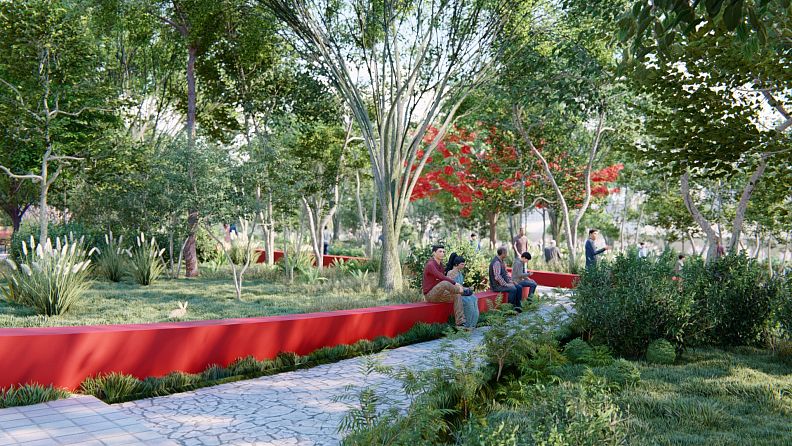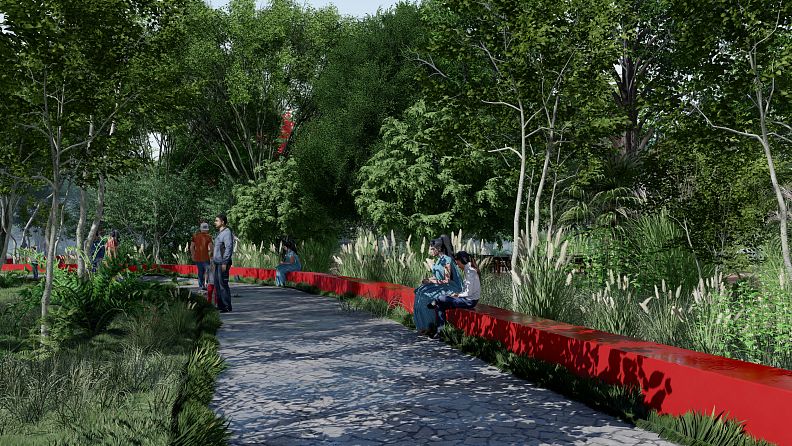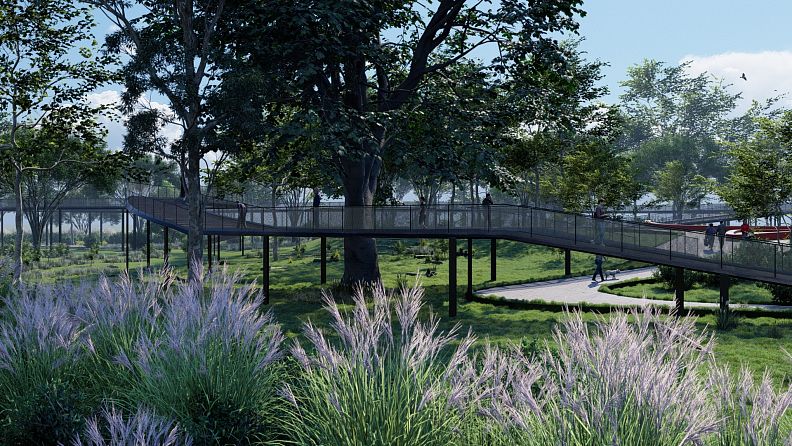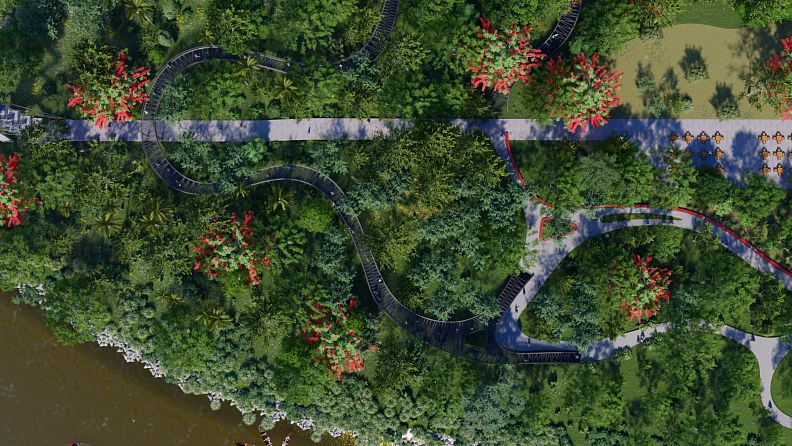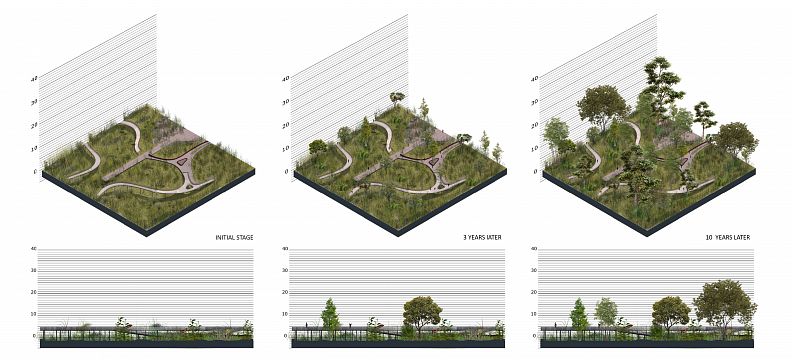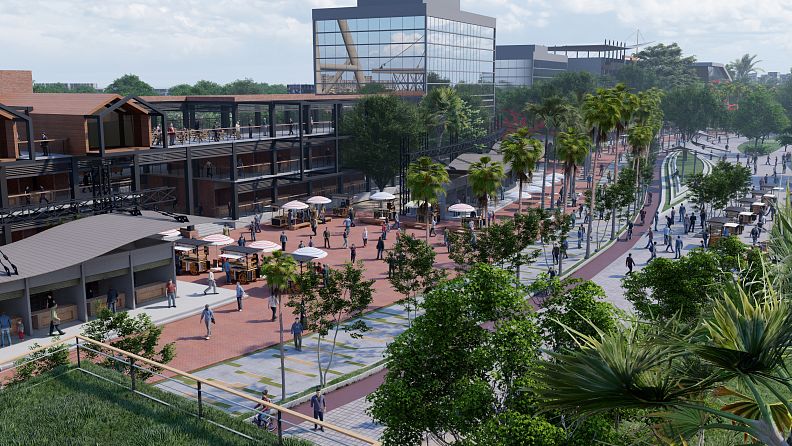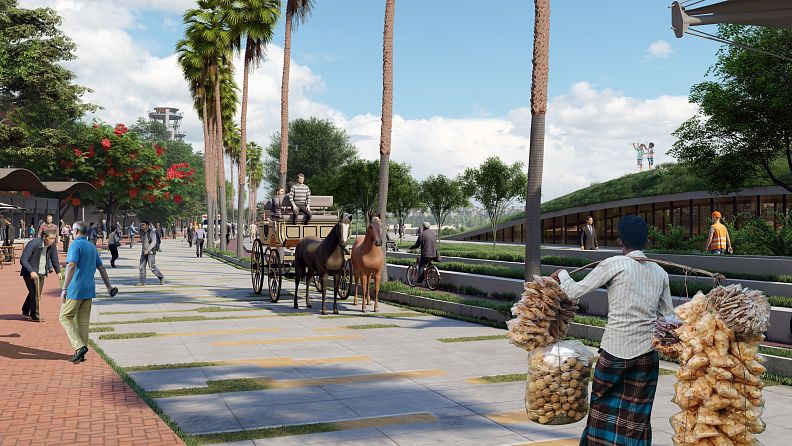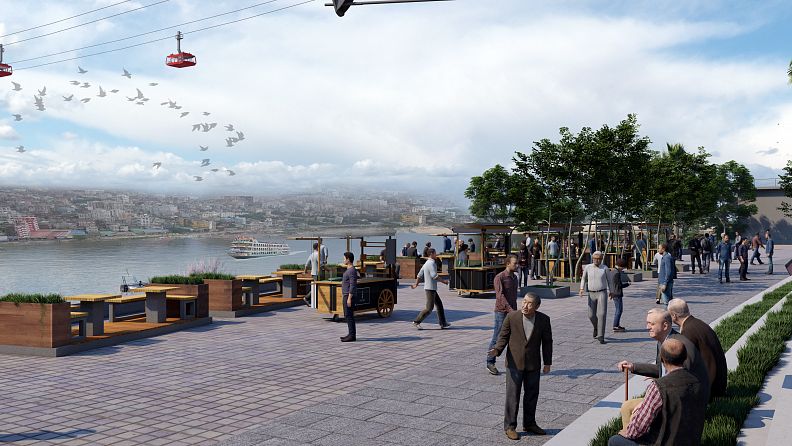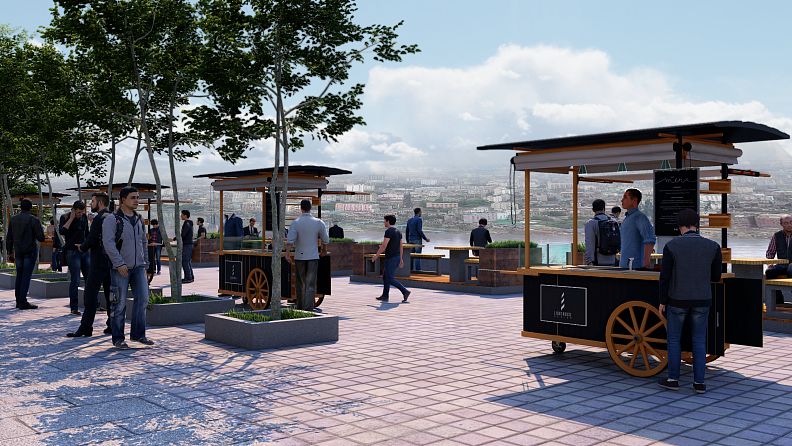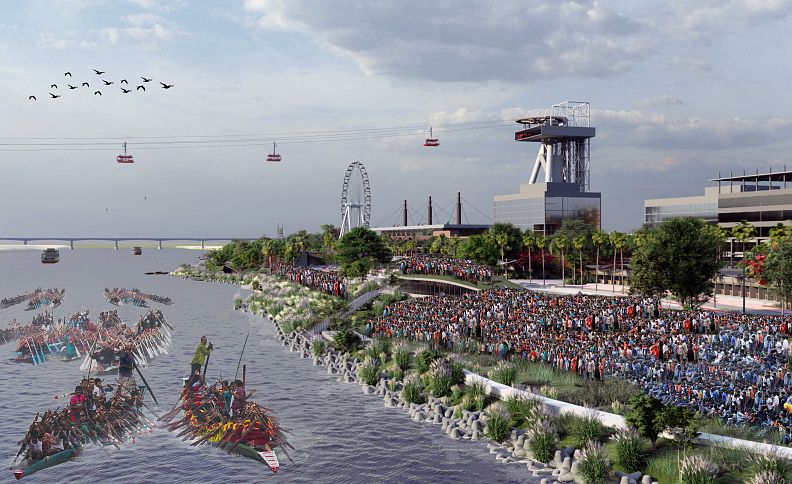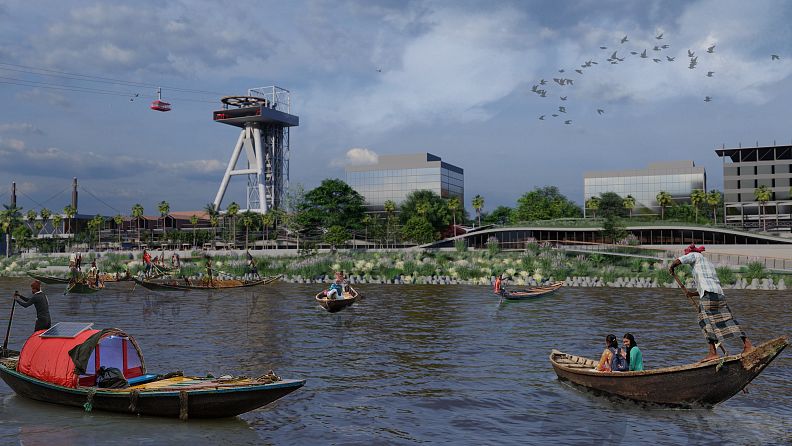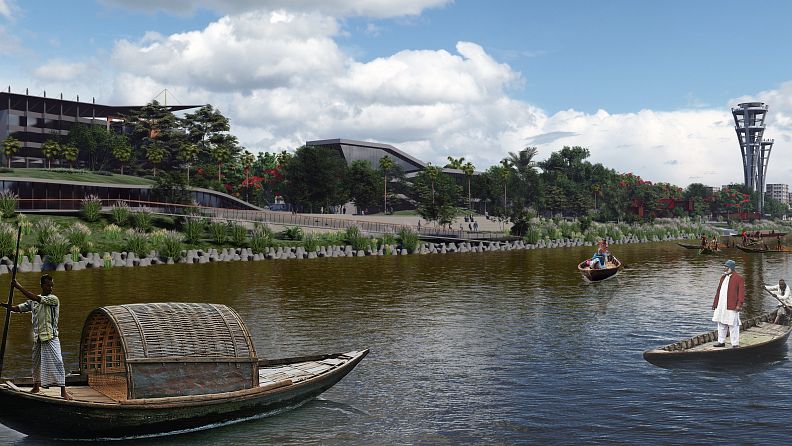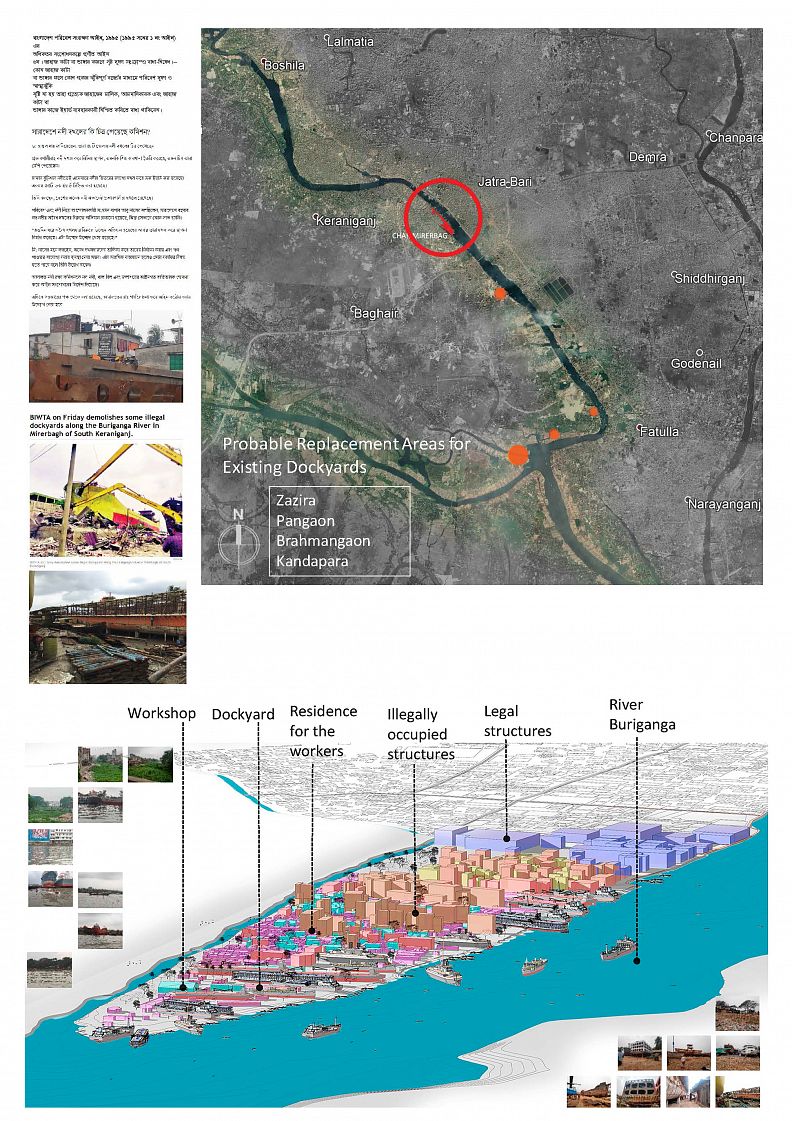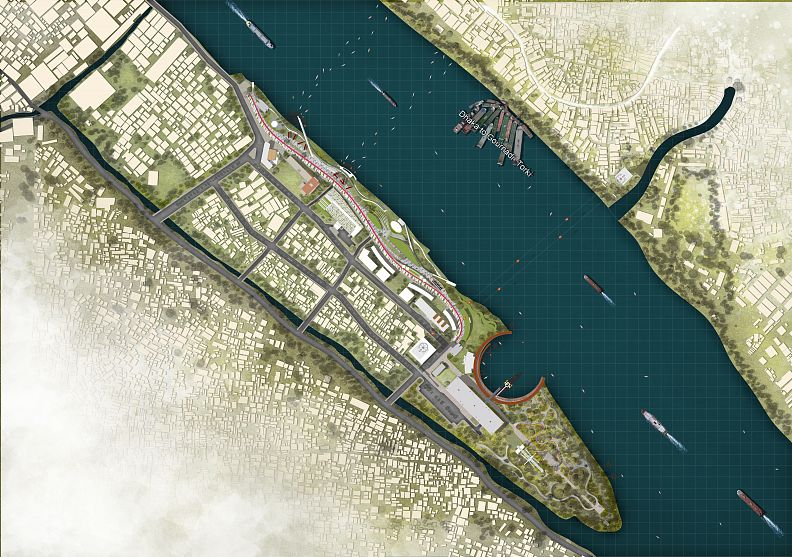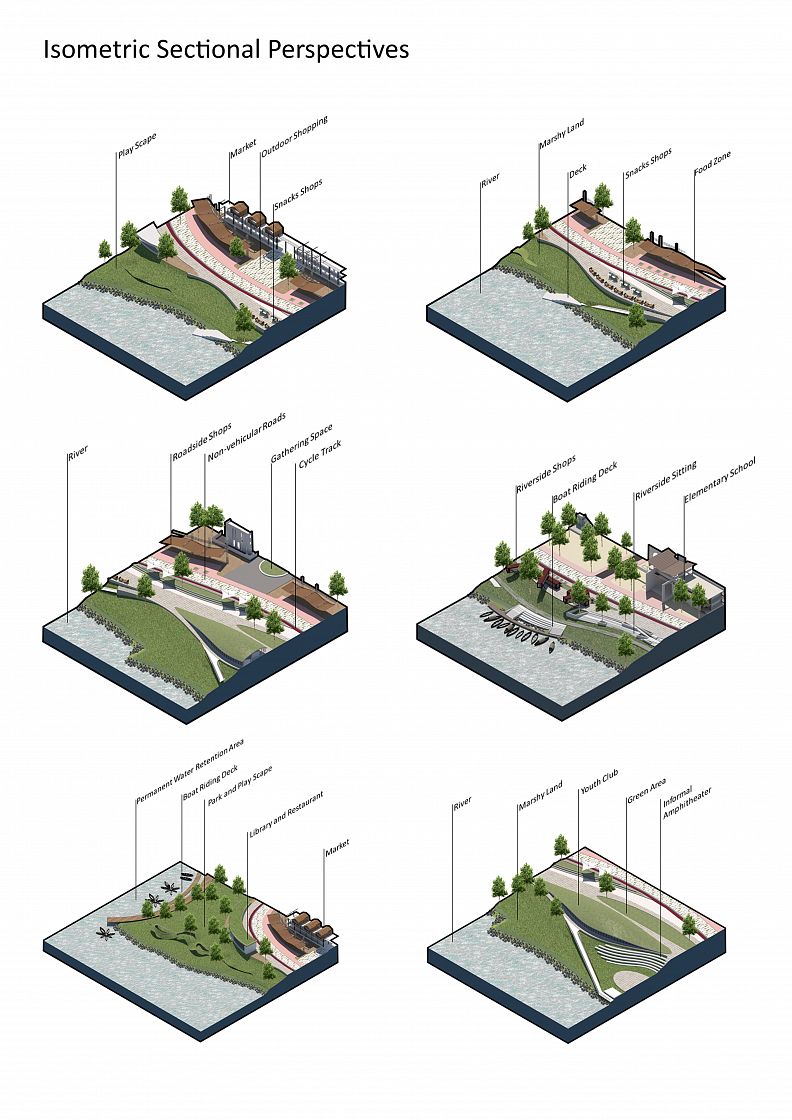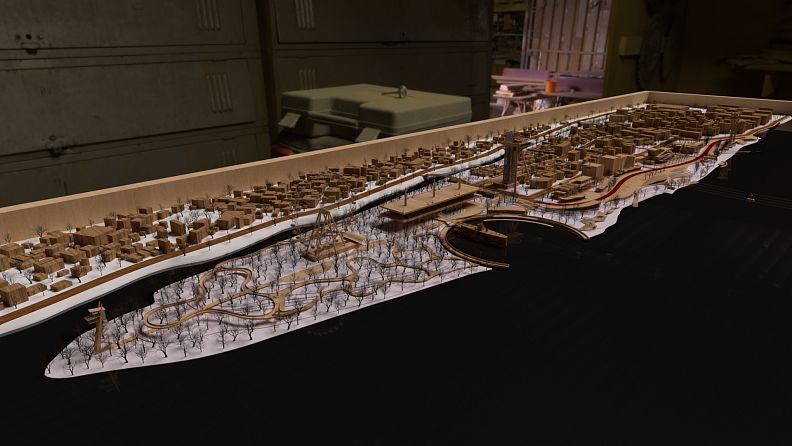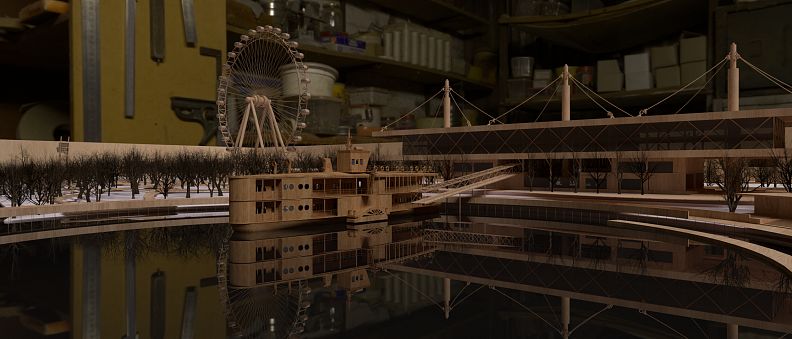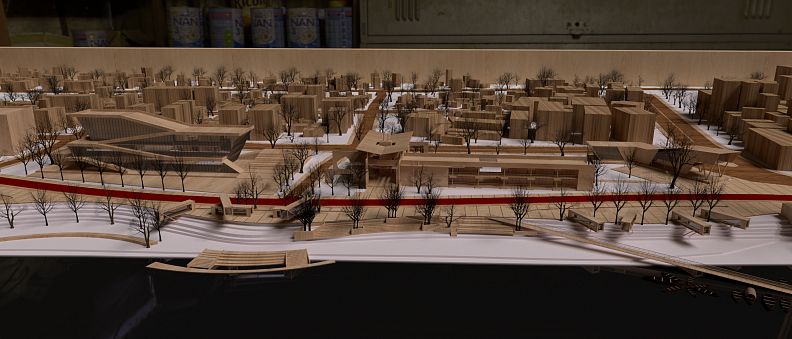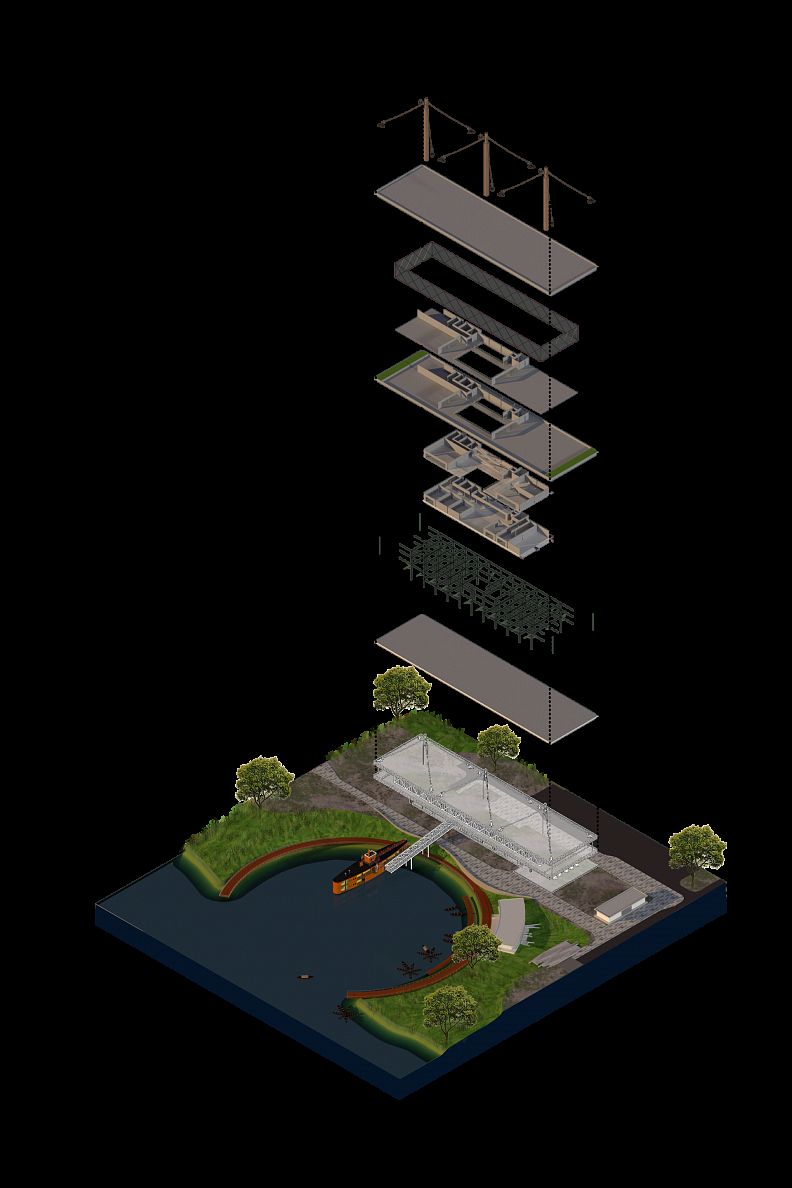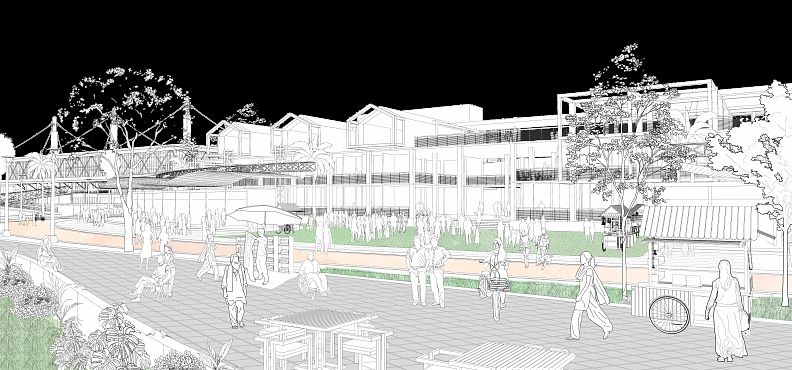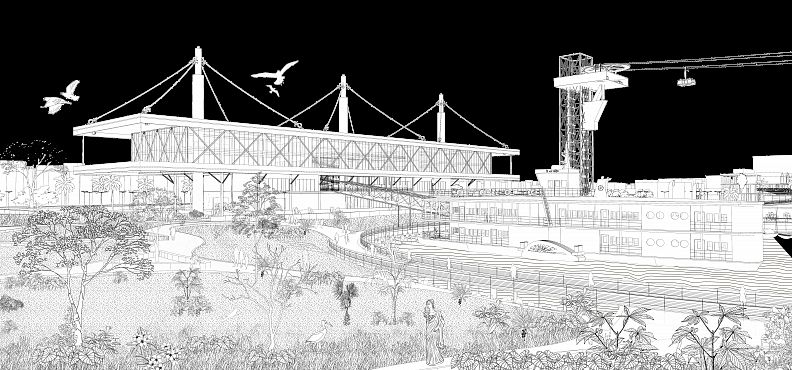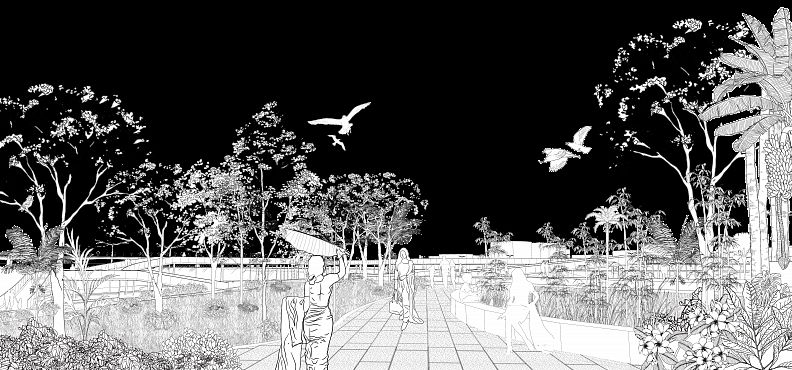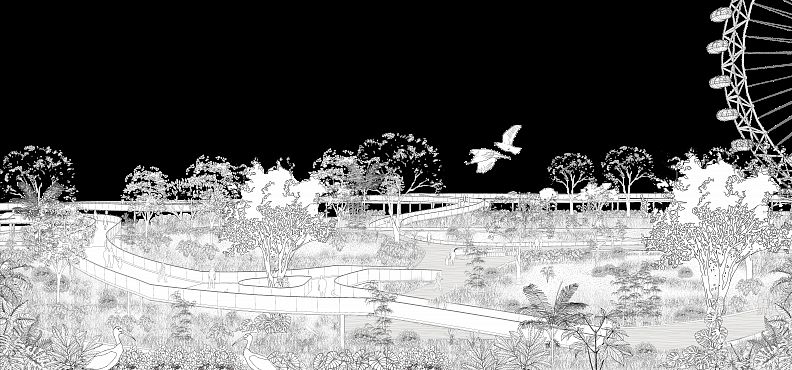Resuscitation of Living : A Synectics Approach For Char Mirer Bagh on the River Buriganga

Project idea
The world's natural resources are on the brink of extinction today. Gradually our rivers are drying up, the green areas around the river are disappearing and man-made concrete debris is forming. Proper resuscitation is needed right now to save the world and its living.
Bangladesh is a riverine country and also has the largest delta in the world. But our rivers are getting degraded day by day due to occupation, wrong steps, and man-made pollution. By taking the right initiative, it is possible to restore the rivers to their beauty. This research report is being presented on the re-imaging the water edge identity of Char Mirerbagh on the banks of the river Buriganga. It is possible to keep the riverbank free from encroachment through soft engineering and by creating a beautiful environment and recreational zone by considering the needs and benefits of the people in the vicinity without interfering with the normal flow of the river. The issue of riverbank revitalization has been highlighted through the proper research process. This study examines the issues that are responsible for the deterioration of the Riverfront and tries to find out what are the perceptions of people about the Riverfront use. Data has been collected for understanding the actual condition of the Riverbank and to get the perception of the citizen about their views and what are their expectations regarding the redevelopment of the Buriganga Riverfront.
Here Resuscitation of Living means the process of correcting our acutely polluted river and its surrounding’s living creatures and activities through the Synectics Approach, which represents a problem-solving methodology.
This is a prototype project which helps us to re-imagine a green city space. which can make a major impact on global warming problems.
Project description
BIWTA (Bangladesh Inland Water Transport Authority) is working to evict illegal structures in the four riverine areas around Dhaka city. In this context, instructions were given to evict the illegal dockyards in the Char Mirerbagh area on the river Buriganga. This project aims to rethink the banks of the river after removing the illegally built dockyard. To that end, I am proposing a new healthy recreational space for the future by liberating the Char Mirerbagh area of Keraniganj on the banks of the river Buriganga.
When designing a riverbank, care should always be taken not to disrupt the normal flow of the river. If the side of the river is filled, exactly the same amount of space has to be left for the river. The riverbank should be in the form of a slope. So that the river can be given enough space during the rainy season. This prevents the river from changing its course and reduces the incidence of floods in the vicinity.
Technical information
This design started by thinking of 2 phases. In the first phase, only the river banks will be worked on, and various community and recreational functions will be brought to the river. This will accelerate riverine development and reduce the tendency to occupy rivers. Existing roads are extended in the first phase for the development of the next phase. Subsequently, the land value will increase and will be transformed into an improved commercial area near the river.
Wetland park will take on different forms in different seasons. Basically, the plantation will be allowed to grow here in the natural process. During the rainy season, it will sometimes drown and sometimes it will float. Somewhere there will be soft pathways and somewhere there will be elevated pathways. A large green chunk will help to reduce the increasing temperature of megacity Dhaka.
A non-vehicle pedestrian road by the river has been proposed in this project, where cars can come during emergencies, but at other times this road will be used for people to walk. One day a week there may be a holiday market on this street.
By connecting cable car from Char Mirerbagh to Ahsanullah Road adjacent to Farashganj, Dhaka, it is possible to complete fast communication between the two banks of the river at the same time. In the case of tourists, it is possible to visit the historical belt of old Dhaka and move directly to the newly designed recreational zone on the other side of the river. one station will be placed in Char Mirerbagh and another will be placed in Dhaka beside Narinda Khal.
The Buriganga Museum will showcase the history of Dhaka's rise along the Buriganga River, paintings of old rivers and riverbanks, panoramas, river vessels of different periods, riverine commerce of the time, as well as riverbank installations and architectures, and in some cases live experiences.
Large ships used to sail on the river Buriganga. After entering the river from the sea, the sails of the ship were lowered. As a result, the mast of the ship could be seen from a distance. Inspired by that mast, I thought of the design of the River Museum next to the river Buriganga. Which will remind us of the old glorious days of Buriganga.

